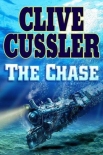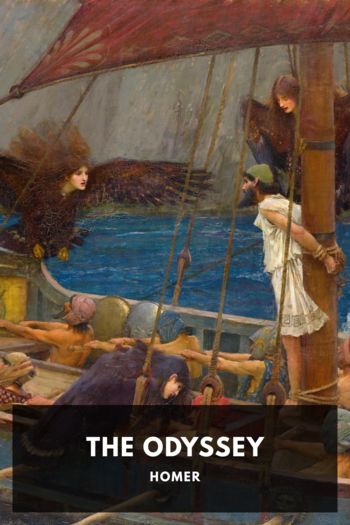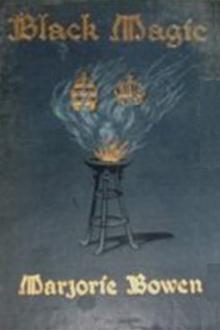The Chase, Clive Cussler [best memoirs of all time txt] 📗

- Author: Clive Cussler
Book online «The Chase, Clive Cussler [best memoirs of all time txt] 📗». Author Clive Cussler
“Be right there, Mr. Castle,” Roy called out from inside the vault.
“Tell him to leave the vault open,” said the bank robber quietly, with a sharp edge to his voice.
“Roy, don’t close the vault door,” Castle complied as ordered, his eyes crossing as they focused on the gun pressing against his forehead.
Roy stepped from the vault, a ledger under one arm. He couldn’t see the unconscious woman lying under the counter. Suspecting nothing, he entered Castle’s office and abruptly stiffened when he saw the robber holding a gun to his boss’s head. The robber pulled the gun barrel away from Castle’s head and motioned with the muzzle toward the vault.
“Both of you,” he said calmly, “into the vault.”
There was no thought of resistance. Castle rose from his desk and led the way into the vault while the robber stepped quickly to the window to check the street for anyone heading for the bank. Except for a few women shopping and a passing beer wagon, the street was quiet.
The interior of the vault was well lit, with an Edison brass lamp hanging from the steel ceiling. Except for the chest containing the gold, stacks of bills, mostly the payroll for the mining companies, covered the shelves. The robber threw the gunnysack at the teller.
“Okay, Roy, fill it with all the greenbacks you have.”
Roy did as he was told. With trembling hands, he began sweeping the piles of bills of various denominations into the sack. By the time he was finished, the sack was stretched to the limit of its burlap fibers and seemed to be the size of a well-filled laundry bag.
“Now, lay down on the floor,” ordered the robber.
Castle and Roy, believing the robber was now about to make his getaway, stretched out flat on the floor, with their hands stretched over their heads. The robber pulled a heavy woolen scarf from one of his pockets and wrapped it around the muzzle of his automatic. Then he systematically shot both men in the head. It sounded more like two loud thumps than the sharp crack of gunfire. Without another second’s hesitation, he heaved the sack over one shoulder and walked from the vault without looking back.
Unfortunately, he wasn’t finished. The woman under the counter moaned and tried to rise to her elbows. With utter indifference, he leaned down, lowered the gun, and shot her in the head like he had the bank owner and teller. There was no remorse, not the slightest hint of emotion. He didn’t care whether any of them left families behind. He had murdered three defenseless people in cold blood with as little interest as he might have shown stepping on a column of ants.
He paused to search for one of the shell casings he thought he’d heard fall to the floor from inside the scarf wrapped around the gun but could not find it. He gave up and walked casually from the bank, noting with satisfaction that no one had heard the muted gunshots.
With the gunnysack bulging with cash slung over his shoulder, the man walked through the alley running behind the bank. Stepping into a small alcove under a stairway where he would not be seen, he took off the grimy clothes, removed the gray wig and beard, and threw everything in a small valise. Now revealed in an expensively tailored suit, he perched a bowler hat at a jaunty angle on his head and its neatly brushed carpet of red hair. He slipped on a necktie and knotted it before also tossing the scuffed boots in the valise. He was a short man, and the soles and heels of the boot had been raised nearly two inches. Next, he pulled on a pair of English-made leather shoes, with lifts in the heel to make him appear taller, before turning his attention to a large leather suitcase he had hidden under a canvas tarp along with a Harley-Davidson motorcycle. Glancing up and down the alley every few seconds, he transferred the huge pile of cash from the gunnysack to the suitcase, which he strapped on a rack over the rear wheel of the motorcycle. The valise containing his disguise he tied on a front rack.
At that moment, the man heard shouting coming down the alley from Tombstone Canyon Road. Someone had discovered the bodies in the Bisbee National Bank. Unconcerned, he pushed the motorcycle forward and started the three-horsepower, twenty-five-cubic-inch one-cylinder engine. He threw one leg over the seat and rode deserted back alleys to the railroad yard. He moved unseen along a siding where a freight train had stopped to take on water.
His timing was perfect.
Another five minutes and the freight train would have moved back onto the main line and headed toward Tucson. Without being noticed by the engineer and the brakeman, as they pulled a big pipe down from the wooden tank into the tender for water to make steam, the man took a key from his vest pocket and opened the padlock to the door to a boxcar that was marked with a painted sign that read O’BRIAN FURNITURE COMPANY, DENVER. He slid the door open on its rollers. The presence of the boxcar in this time and place was no coincidence. Acting as a fictitious representative of the equally fictitious O’Brian Furniture Company, he had paid cash for it to be included in the freight train passing through Bisbee, en route from El Paso, Texas, to Tucson, Arizona.
He took a wide plank, attached by brackets to the side of the boxcar, and used it as a ramp to ride the Harley-Davidson aboard. Then he quickly closed the rolling door and reached through a small hinged opening to replace the lock as the whistle on the engine tooted and the train began moving forward from the siding onto the main track.
From the outside, the boxcar looked like any other that had been in use for several years. The paint was faded, and the wooden





Comments (0)